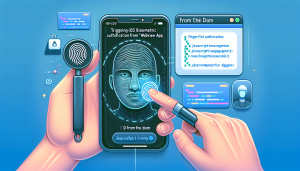
With smartphone security now more critical than ever, users have come to expect seamless, secure login experiences. Apple’s Face ID technology has emerged as a front-runner in biometric authentication, delivering unmatched convenience and robust security. Integrating Face ID into your iOS WebView apps can significantly streamline the user authentication process while boosting confidence in your app’s security posture.
Why Integrating Face ID Makes Sense for Your WebView App
Biometric authentication methods like Face ID provide a unique combination of convenience and security that passwords or traditional login methods simply cannot match. Here are a few key benefits of leveraging Face ID in an iOS WebView app:
- Enhanced Security: Face ID employs sophisticated facial recognition algorithms, significantly reducing security risks associated with easily guessable passwords.
- Streamlined User Experience: Users can authenticate themselves instantly, eliminating the hassle of remembering or resetting passwords regularly.
- Increased Trust and Credibility: Offering high-end security features positions your app as modern, reliable, and trustworthy.
Challenges in Adding Face ID to WebView Apps
While integrating Face ID into native applications is relatively straightforward, WebView-based apps can present their own sets of challenges. A WebView essentially displays web content within an app shell, meaning the integration of native API calls—such as those required by Face ID—can become somewhat tricky.
Simplifying Integration with Tools Like WebViewGold
Fortunately, there are easy-to-use solutions available for turning your existing website into a fully functional iOS app with ease. One such solution is WebViewGold, a rapid and intuitive platform that simplifies converting websites into iOS apps efficiently. Utilizing WebViewGold enables developers to quickly integrate advanced features, like native Face ID support, without needing extensive knowledge of Objective-C or Swift.
Implementing Face ID: Key Steps for Seamless Integration
- Prepare Your Project Environment: Ensure your Xcode environment and app project are properly configured to integrate Face ID capability, typically managed via the LocalAuthentication framework provided by Apple.
- Add Necessary Permissions and Capabilities: Update your app’s Privacy settings and plist file appropriately to request user permission for biometric authentication.
- Invoke Native Authentication from WebView: Using JavaScript bridges or native wrapper plugins (like those provided by WebViewGold), trigger Face ID prompts seamlessly when needed during user logins.
- Handle Authentication Results Securely: Manage and securely store authentication responses, ensuring proper synchronization with your backend services for secured user session management.
Best Practices for Delivering Exceptional Face ID Experiences
To maximize the benefits of Face ID integration, keep these best practices in mind:
- Transparent User Communication: Inform users clearly about the benefits and usage of Face ID, emphasizing enhanced security and ease of use.
- Graceful Fallback Options: Always provide alternative authentication options, such as passcodes or passwords, if a user chooses not to or can’t use Face ID temporarily.
- Regular Updates and Testing: Continuously test and optimize your biometric authentication flow, ensuring responsiveness and reliability across different iOS devices and versions.
Unlocking the Full Potential of Face ID in WebView Apps
Integrating Face ID into your WebView app doesn’t need to be complex or daunting. By employing user-friendly solutions like WebViewGold and staying consistent with best practices, you can deliver secure, reliable, and highly convenient user authentication experiences effortlessly. Now is the time to harness the power of biometric authentication and give your users the streamlined, secure login process they expect and deserve.




